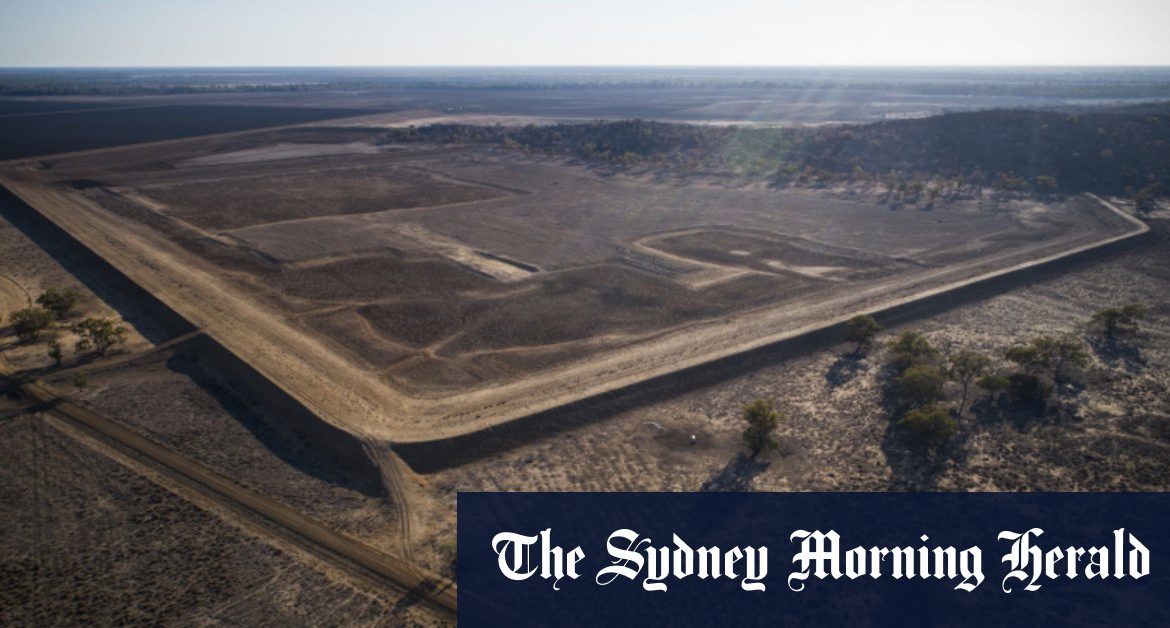Loading
Much of the construction is also likely to be related to so-called flood plain harvesting in which irrigators have built earthworks aimed at trapping and storing water as it moves across the often flat landscape. The then-Labor government banned such additional work in July 2008.
An NRAR spokeswoman declined to say what proportion of the alleged breaches involved post-2008 structures, saying “we do not comment on ongoing investigations”.
“Flood works can be a barrage, causeway, cutting or embankment that are situated within a flood plain and is of a size to have a likely effect on the distribution or flow of water,” she said.
Of the 1036 alleged breaches since January this year, “134, or 13 per cent, of these are specific to flood works”, she said, adding that 88 of these “have been classified as high priority and are being investigated”.
Floodplain harvesting has meant less water reaching wetlands such as the Macquarie Marshes.Credit:Nick Moir
Loading
NSW Water Minister Melinda Pavey declined to comment, diverting questions to the Department of Planning, Industry and Environment.
Mr Field said the high number of investigations being pursued by NRAR relating to flood works “shows there is a serious problem and not all players are acting in good faith”.
“There are billions of dollars worth of water licences about to be handed out to irrigators, on the basis of legally questionable historical practices and with the promise of legally questionable sharing rules,” Mr Field said. “This process is a mess.”
Loading
The documents also reveal more about the Berejiklian government’s manoeuvring to exempt big irrigators, many of whom are cotton farmers, from needing to hold licences to capture floodwaters.
That exemption effort was blocked in a disallowance motion in September by a broad coalition of parties from Labor and the Greens to the Shooters, Fishers and Farmers.
One email from the night of the disallowance vote showed Dan Connor, the director of Health Floodplains Project Delivery, advising colleagues in Planning that the government could achieve the same outcome as it sought depending on how the regulator enforced its powers.
“The only way to achieve the same intent of this regulation is if the regulator exerise [sic] their discretion,” Mr Connor said in the email date-stamped 10.50pm, September 2020. “There are plenty of good reasons why they would do this, but there are considerable risks regardless of what decisions they make.”
Loading
The NRAR spokeswoman denied the regulator’s enforcement would provide an opening for irrigators to get away with illegal structures.
“In circumstances where non-compliance is encountered, we will exercise our discretion as we have demonstrated in the 1400 cases investigated in the last year, resulting in NRAR taking 500 compliance actions, including prosecutions,” she said.
The release of documents follows last month’s publication of a lengthy Independent Commission Against Corruption report into the water sector that found water policy in the state was “unduly focused” on irrigators’ interests at the expense of the environment.
Emma Carmody, a managing lawyer at the Environmental Defenders Office, said the state needed “legally binding, downstream flow targets that ensure sufficient volumes of water make it down the river to protect ecosystem health, cultural requirements and drinking water”.
“Without these, we can expect to see more blue-green algae outbreaks on the Darling/Barka River and fish kills around the Menindee Lakes, particularly in a drying climate,” Dr Carmody said, adding that “we can also expect to see legal action” if those targets were not forthcoming.
Peter Hannam writes on environment issues for The Sydney Morning Herald and The Age.
Most Viewed in Environment
Loading







